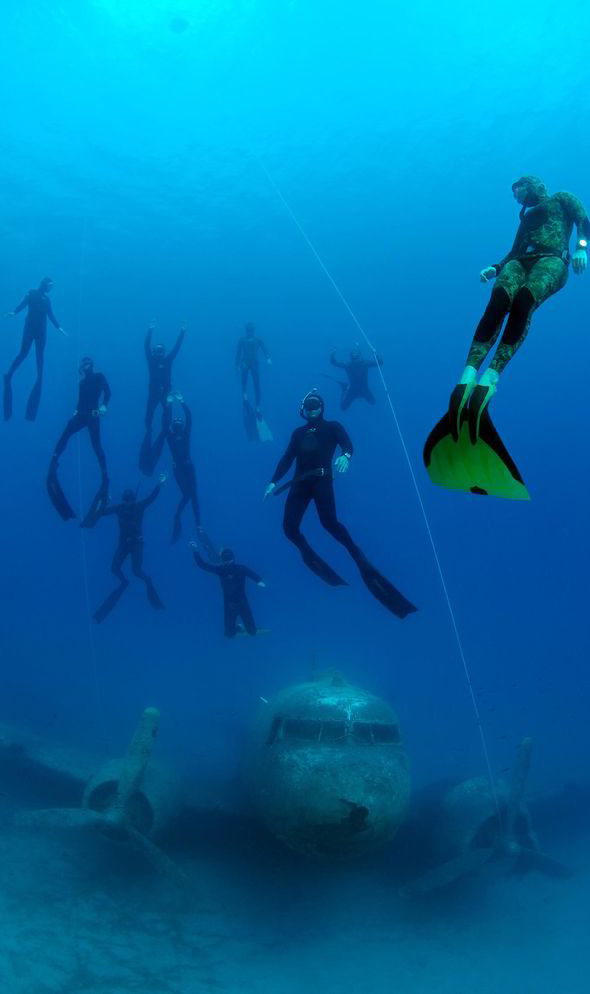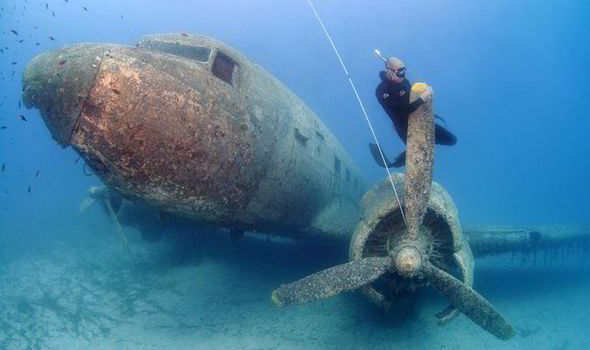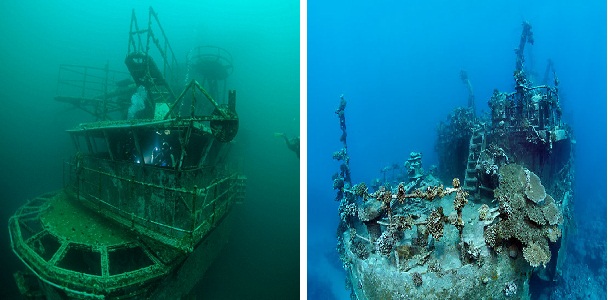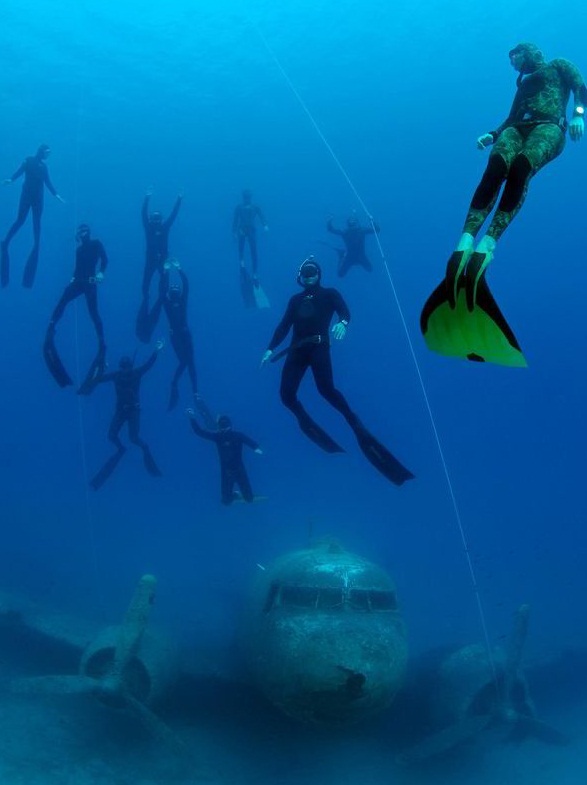
Diver takes stunning pictures of a WWII plane which once transported Turkish paratroopers and is now a home to tropical sea creatures under the sea.
The Douglas Dakota DC-3 had been at the bottom of the Mediterranean for many decades. As a matter of fact, it is now covered with algae and many fishes have converted it as their home and playground. But according to diver and underwater snapper Andrey Neskarov, the plane is placed on a good spot it looked “as if it were on an airfield runway”.
Diver Neskarov’s stunning shots show the plane, which was once capable of going to speeds up to 230 mph and reaching heights of up to 23,000 feet, as a playing spot for shrimps, barracudas as well as corals living 21 meters under the waters.
The said plane was purposely sunk in the waters near Kaş, Turkey as an underground playground for divers.
“We went on a diving boat to a small island. Directly below us lay the plane – its blurred outlines were visible on the surface of the water,” diver Neskarov said after he lunged into the wreck and then added…
“The plane was so well preserved, it looked as if it were resting on an airfield runway. It looked unusual and beautiful.”
The diver, who was from Odessa in Ukraine, was with other underwater explorers from Russia. They explored the almost perfectly preserved plane wreck without the use of any underwater breathing apparatus.

Diver Neskarov used the large door in the plane’s main hull, the one from where the exiting paratroopers jumped out, to get into the sunken aircraft.
His stunning takes on the immersed WWII plane show the inside of the plane’s fuselage which is now encrusted with barnacles, the rusted yet still intact outer body and the plane’s busted nose cone.
“Not all free-divers were able to reach the plane on their first try. But once everyone in the group had managed to reach the plane we decided to take a group picture. Towards the end of the dive I was able to hold my breath long enough to look inside the cabin,” the diver pointed out.
Without the use of oxygen tanks or any other breathing equipment, the divers, in their full face masks and wet suits, had to surface every two minutes to breathe in air.
Neskarov was also able to capture haunting images of the plane’s propellers, wings and cabins. All these parts are still in their spots.
The first Douglas DC-3 took off in 1935. It was one of the most outstanding aircraft in its time with over 13,000 of it built.
The Allied forces used a variant of it, the C-47 Skytrain, during WWII.
While the last DC-3 was built in 1945, some of it still exist and are used as cargo planes in developing nations like Tonga and Bolivia.

The DC-3 in the Mediterranean is not the only diving wreck spot for underwater explorers. There’s Doty, a huge steam ship wreck in Lake Michigan in America and the mysterious Russian ship wreck under the waters off Zabagad Island which is in South Egyptian Red Sea.
